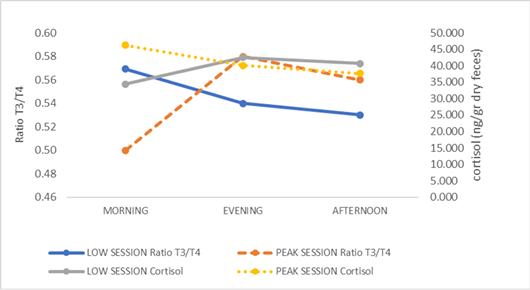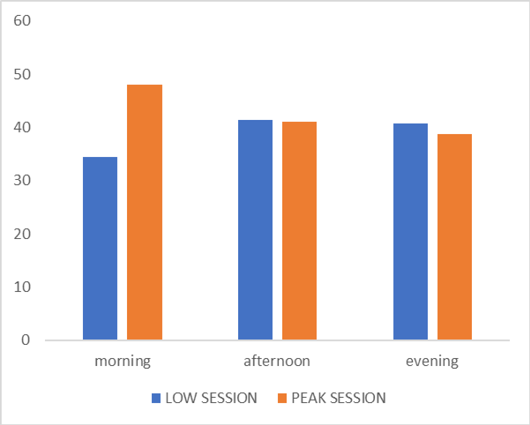Edu-Ecotourism Concept of Equine Cortisol Metabolites and Tri/Tetra-Iodothyronine Ratio
Claude Mona Airin1*, Miyayu Soneta Sofyan2, Galy Hardyta3, Khrisdiana Putri4, Pudji Astuti1
1Department of Physiology, Faculty of Veterinary Medicine, Universitas Gadjah Mada Yogyakarta, Indonesia; 2Health Departement Faculty of Vocational Study Airlangga University, Surabaya, Indonesia; 3Faculty of Agriculture, Department of Animal Husbandry, Universitas Tidar Magelang, Indonesia; 4Department of Veterinary Public Health, Faculty of Veterinary Medicine, Universitas Gadjah Mada Yogyakarta, Indonesia
*Correspondence | Claude Mona Airin, Department of Physiology, Faculty of Veterinary Medicine, Universitas Gadjah Mada Yogyakarta; Email: monaairin@ugm.ac.id
Figure 2:
Comparison of T3/T4 ratio and cortisol levels (ng/g dry feces) during morning, afternoon, and evening riding horse between low and peak seasons.
Figure 1:
Cortisol level (ng/gr dry feces) comparison between low dan peak season.








